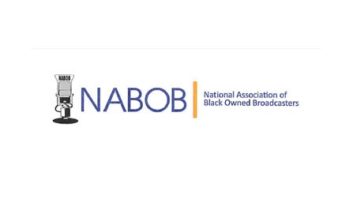Broadcast engineers are an ingenious bunch. It seems we’re always pressed to do more with less or to cut corners just to get a station back on the air.
Fig. 1 is a case in point. Need “something” to insulate drooping feeder wires for a sagging folded unipole? A plastic coat hanger fits the bill.
(click thumbnail)Fig. 1: A plastic coat hanger makes a good quick insulator. But remember, this fix is temporary.
The problem with a temporary fix like this one is that too often it becomes permanent. A proper solution might wait until the station is sold and due diligence is performed.
Temporary fixes that age into permanent ones may be a red flag for the inspecting engineer. His pictorial photo essay of the station equipment and its condition could paint you in the wrong light.
So go ahead and be ingenious to get yourself back on the air. But then also be firm with management about the need to “fix it right” sooner rather than later.
. . .
Gary Wachter, DOE for KKDA(AM-FM) and KRNB(FM) in Dallas, read the suggestion from one of our readers about relays by Elk Products.
Elk makes other innovative products of interest. Gary has been impressed with the M1-Gold “cross platform” control. It looks like a standard security controller but is much more.
The control is programmable and comes with 16 zones, expandable to 208. The zone inputs can be simple alarm contacts or analog inputs. The outputs are open collector and can drive relays or optical isolators directly.
You can write scripts to execute tasks based on inputs, time of day, temperature, etc. The control can communicate over the telephone with voice, tones, modem, even directly with RS-232 or Ethernet. It may not replace your dedicated remote control, but it sure can keep tabs of your facility and take corrective action.
Here’s the best part: A complete package with cabinet, controller, power supply, speaker, battery and keypad retails for $839. Gary found his at AutomatedOutlet.com for less than $550.
Gary Wachter can be reached at [email protected].
. . .
Paul Sagi, who writes to us from Malaysia, obtained one of those white light LED key chains. He reports that the white light does a great job when reading component color codes. Sometimes other light sources are not white enough, or too dim, to correctly render the colors.
(click thumbnail)LED white light helps identify components.
The keychain light also is helpful when unlocking dark transmitter buildings – you know, after the vandals have smashed the outside lights.
Reach Paul at [email protected].
. . .
Unusual engineering stories always seem to find their way to this column; here’s one from contract engineer Tim Walker. He was investigating high VSWR overloads at a new LPTV transmitter site in Martinsville, Va., recently.
It seems that within two months the transmitter began showing high reflected power overloads. Tests into a dummy load demonstrated that the transmitter was fully functional; and TDR measurements of the transmission line showed no indication of line problems to the base of the antenna.
However, when Greg Harrington, Sky Tower Service, disconnected the transmission line from the base of the antenna, he noticed about an ounce or two of water standing on the inside of the 1-5/8-inch flange transmission line connector. Because the system was unpressurized, the water was visible standing on top of the solid foam dielectric.
The flange and gasket appeared to be leak-proof. Everyone was puzzled as to how the water had invaded the line – until the 4-inch-to-1-5/8-inch reducer was removed from the base of the antenna.
Careful scrutiny found a tiny pinhole in a weld at the 1-5/8 end of the reducer. The team suspects that moisture entered at this point. They satisfied themselves that this was the culprit by sealing the 1-5/8-inch end of the reducer with a gasket and end cap, adding about two ounces of water from the 4-inch side and inserting the inner conductor of the reducer through its gasket seal and into the 1-5/8 section.
(click thumbnail)‘Don’t Cry for Me, Line Reducer.’ Water weeps from pinhole leaks.
Pushing the inner conductor into place in this manner increased the pressure slightly inside the 1-5/8-inch reducer section and forced trace amounts of water out of the pinholes of the weld. Testing the reducer in this manner revealed two separate pinholes in the weld. Tim and his team surmised that on warm days, the air inside the assembly expanded and exited through the pinholes. As temperatures decreased, the inside air contracted, creating a slight negative pressure that sucked in any moisture droplets that had condensed near the pinholes or raindrops from precipitation.
Condensed water in this section of the line reducer fell to the bottom of the connector and collected on top of the solid foam dielectric until the quantity was sufficient to generate the VSWR symptoms.
Fig. 3 shows the water droplets observed escaping the pinholes during the test. The pinholes were so small that water would not flow through them unless there was a pressure difference between the inside and outside of the reducer.
Tim Walker is at [email protected].
Submissions for this column are encouraged, and qualify for SBE recertification credit.















